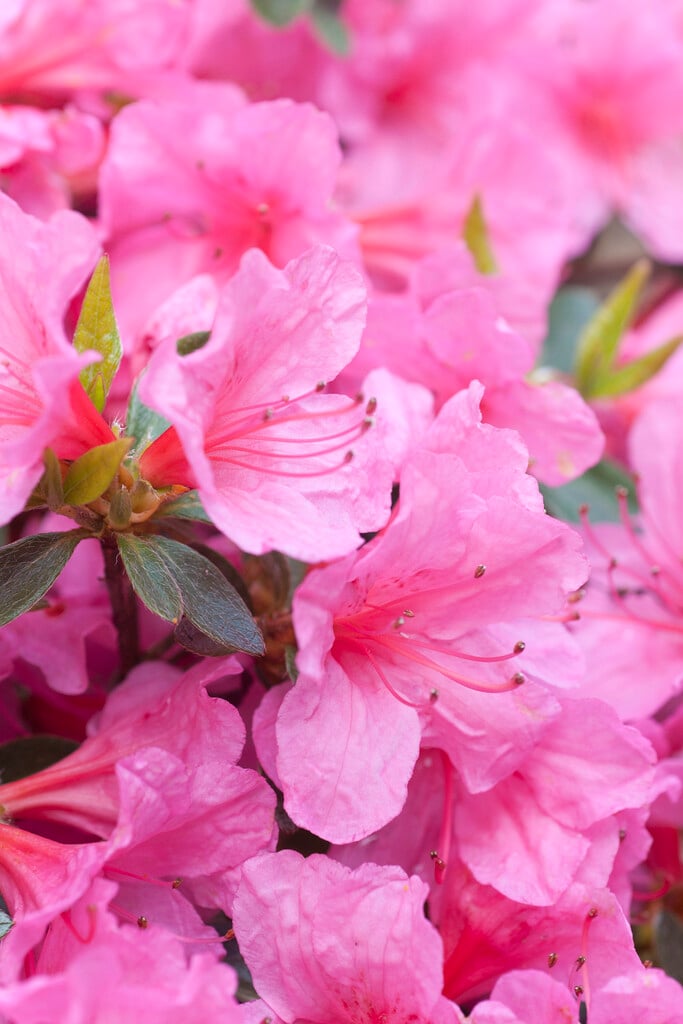Rhododendron 'Madame Albert van Hecke' (EA)
rhododendron 'Madame Albert van Hecke'
An evergreen azalea to about 90cm high, with a relatively upright, and small ovate leaves that open bright green and mature to dark green. Produces masses of small, rose pink flowers in late spring
Size
Ultimate height
0.5–1 metresTime to ultimate height
5–10 yearsUltimate spread
0.5–1 metresGrowing conditions
Moisture
Moist but well–drainedpH
AcidColour & scent
| Stem | Flower | Foliage | Fruit | |
| Spring | Pink | Green | ||
|---|---|---|---|---|
| Summer | Green | |||
| Autumn | Green | |||
| Winter | Green |
Position
- Partial shade
Aspect
North–facing or West–facing
Exposure
Sheltered Hardiness
H6Botanical details
- Family
- Ericaceae
- Native to GB / Ireland
- No
- Foliage
- Evergreen
- Habit
- Bushy
- Potentially harmful
- Harmful if eaten. Wear gloves and other protective equipment when handling. Pets (dogs, cats, rabbits, tortoises) Harmful if eaten - for further information and contact numbers regarding pets, see the HTA guide to potentially harmful plants
- Genus
Rhododendron can be evergreen or deciduous shrubs or trees, with simple leaves, sometimes with a dense colourful indumentum of hairs on the lower side, and funnel-shaped, bell-shaped or tubular flowers that may be solitary or in short racemes
- Name status
Accepted
- Horticultural Group
- Evergreen azaleas are compact evergreen shrubs with small leaves and terminal racemes of small, funnel-shaped, usually unscented flowers in early summer
How to grow
Cultivation
Grow in moist but well-drained, humus rich, acidic soil, in partial or dappled shade. Choose a site away from frost pockets and sheltered from strong winds. Mulch annually, ideally with leaf mould. See rhododendron cultivation for more detailed advice
Propagation
Propagate by semi-ripe cuttings in late summer, or by grafting in winter
Suggested planting locations and garden types
- City and courtyard gardens
- Cottage and informal garden
- Patio and container plants
- Flower borders and beds
- Wall side borders
Pruning
Minimal pruning required, see pruning group 8 (evergreens). Deadhead if practical, to promote vegetative growth rather than seed production
Pests
May be susceptible to vine weevil, rhododendron and azalea whitefly, rhododendron leafhopper, Pieris lacebug, scale insects, caterpillars and aphids
Diseases
May be susceptible to powdery mildews, honey fungus, silver leaf and Phytophthora, as well as more specific Rhododendron diseases
Get involved
The Royal Horticultural Society is the UK’s leading gardening charity. We aim to enrich everyone’s life through plants, and make the UK a greener and more beautiful place.
